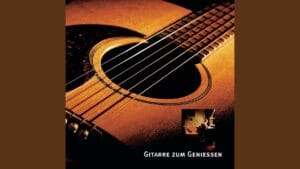John Christopher Williams was born on April 24, 1941, in Melbourne, Australia. A British-Australian classical guitarist, he’s widely regarded as one of the most accomplished and influential players of the 20th and 21st centuries. Known for his flawless technique, crystal-clear tone, and genre-crossing collaborations, Williams elevated the classical guitar from niche recital halls to global concert stages.
After moving to London, Williams studied at the Royal College of Music and received private instruction from Andrés Segovia. His early performances revealed not just technical command, but a commitment to expanding the guitar’s repertoire and cultural reach.
Musical Foundation
Williams’s musical foundation blended traditional Spanish repertoire with modern classical and jazz sensibilities. Segovia shaped his early discipline, instilling a respect for phrasing and tone. But Williams soon diverged—favoring clarity over romanticism and embracing composers who pushed the instrument’s boundaries. His studies emphasized structural integrity and interpretive restraint, laying the groundwork for a career defined by precision and breadth.
His repertoire is famously broad, encompassing the major works of the classical guitar cannon, but also championing composers like Leo Brouwer, Stephen Dodgson, and André Previn. His willingness to collaborate across genres also led to iconic ventures in film and popular music.
Development of Technique
Williams’s technical evolution was marked by flawless articulation, rhythmic control, and tonal purity. He minimized vibrato and avoided excessive flourish, delivering each phrase with architectural clarity. His disciplined right-hand technique and refined touch allowed him to project with power while maintaining intimacy.
Unlike peers who leaned into emotional rubato, Williams prioritized the composer’s intent—making technique a transparent vehicle for musical structure.
Career Milestones
Global Recognition
Williams’s breakthrough came with international tours and a prolific recording career. His interpretation of “Cavatina” for The Deer Hunter became a global touchstone, introducing classical guitar to mainstream audiences.
Genre-Bending Ventures
In the late 1970s, Williams joined the classical/rock fusion group Sky, playing electric guitar alongside progressive rock musicians. The group achieved chart success and expanded the guitar’s cultural footprint.
Educational Impact
Beyond performance, Williams has taught extensively and written about technique and interpretation. His pedagogical work shaped generations of classical guitarists and reinforced his belief that music should serve the composer—not the ego.
Style & Interpretive Approach
Williams’s playing style is defined by flawless articulation, rhythmic precision, and a disciplined approach to phrasing. He prioritizes objective clarity, shaping each passage to reflect the composer’s intent rather than personal flourish. His use of vibrato is minimal, and dynamic shifts are carefully controlled—never exaggerated.
His performances reveal a deep respect for form, balance, and musical architecture. Every phrase is shaped with restraint and purpose, reflecting his belief that interpretation begins with listening.
Instrument & Tone
Williams primarily plays custom classical guitars built by luthiers like Greg Smallman, whose lattice-braced designs offer exceptional projection and tonal balance. His sound is dry, focused, and uncolored—achieved through meticulous right-hand technique and a refusal to rely on amplification or effects.
Even in crossover projects, Williams maintains a tone that is unmistakably classical, shaped more by interpretive intent than by gear.
Legacy
John Williams redefined what classical guitar could be. He proved it could handle modern concertos, intimate folk melodies, and cinematic scores with equal authority. His technical mastery and genre-fluid curiosity made him a global ambassador for the instrument.
Williams’s influence extends beyond recordings—he reshaped pedagogy, expanded repertoire, and inspired guitarists to pursue clarity over flash. His legacy is one of discipline, diversity, and deep musical respect.
Final Reflection
John Williams’s artistry has never been about spectacle—it’s about precision, clarity, and deep respect for the music. He redefined classical guitar by placing interpretation above ego and technique in service of expression.
He distilled this philosophy into a guiding principle, one he articulated with clarity and humility:
“The first job of a performer is to serve the composer. Technique is only a means to an end.” — John Williams
That ethos continues to guide classical guitarists worldwide—reminding them that mastery begins with listening.
Essential Listening
Explore John Williams’s guitar legacy through two distinct lenses: the interpretive clarity of his live performances and the tonal precision of his studio recordings.
Live Performances
John Williams transforms Stanley Myers’s iconic film theme, Cavatina, into a benchmark of poetic classical guitar performance. His serene technical command and pure, controlled tone...
John Williams transforms Stanley Myers’s iconic film theme, Cavatina, into a benchmark of poetic classical...
John Williams’s definitive performance of Albéniz’s "Asturias" is a thrilling display of rhythmic drive, flawless technical speed, and dark, compelling Spanish drama. His signature precision...
John Williams’s definitive performance of Albéniz’s "Asturias" is a thrilling display of rhythmic drive, flawless...
Studio Recordings
Paganini's ultimate test of skill, transcribed for guitar. John Williams delivers a studio masterclass, turning relentless technicality into musical precision and setting the definitive standard.
Paganini's ultimate test of skill, transcribed for guitar. John Williams delivers a studio masterclass, turning...
Williams delivers Bach's Bourrée with surgical articulation and unforced elegance in this studio standard, showcasing his mastery of Baroque counterpoint. His rhythmic clarity sets the...
Williams delivers Bach's Bourrée with surgical articulation and unforced elegance in this studio standard, showcasing...




